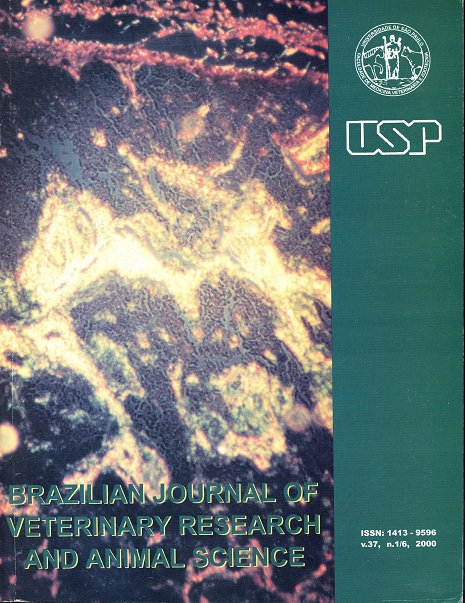Use of isoflurane in capuchin monkeys (Cebus apella - Cebidae, Primata)
DOI:
https://doi.org/10.1590/S1413-95962000000100011Keywords:
Primates, Anesthesia, Cebus apella, IsofluraneAbstract
This study was performed in order to evaluate both clinical and anesthesiological responses during isoflurane anesthesia at 1 MAC and 1.5 MAC in capuchin monkeys. Therefore, ten healthy animals (7 males and 3 females), with an average weight of 3.1 ± 0.8 kg were premedicated with ketamine and atropine and induced with isoflurane. They were maintained with isoflurane at 1 MAC for 30 minutes and at 1.5 MAC for 30 minutes more. The cardiovascular and respiratory parameters were measured every 5 minutes and the pH, blood gases and oxygen saturation at each 10 minutes, from inicial (T0) to final time (T30) at both concentrations. The data were submitted to non-parametric Wilcoxon test statistical analysis (p < 0.05). A decreased in body temperature was observed at both isoflurane concentrations. Although no cardiac arrhythmias could be observed, the heart rate decreased at 1.5 MAC. However there were no changes in blood arterial pressure at any concentration. Isoflurane produced a dose-dependent depression in both tidal and minute volumes, whereas there was no significant change in respiratory rate. The pH, PaO2, PaCO2 and SaO2 didnt change significantly at both concentrations.Downloads
Download data is not yet available.
Downloads
Published
2000-01-01
Issue
Section
VETERINARY MEDICINE
License
The journal content is authorized under the Creative Commons BY-NC-SA license (summary of the license: https://
How to Cite
1.
Vasconcellos CH de C, Mársico Filho F, Gomez Segura IA, Nascimento PRL do, Monteiro RV. Use of isoflurane in capuchin monkeys (Cebus apella - Cebidae, Primata). Braz. J. Vet. Res. Anim. Sci. [Internet]. 2000 Jan. 1 [cited 2024 Jul. 26];37(1):65-9. Available from: https://www.revistas.usp.br/bjvras/article/view/5851





